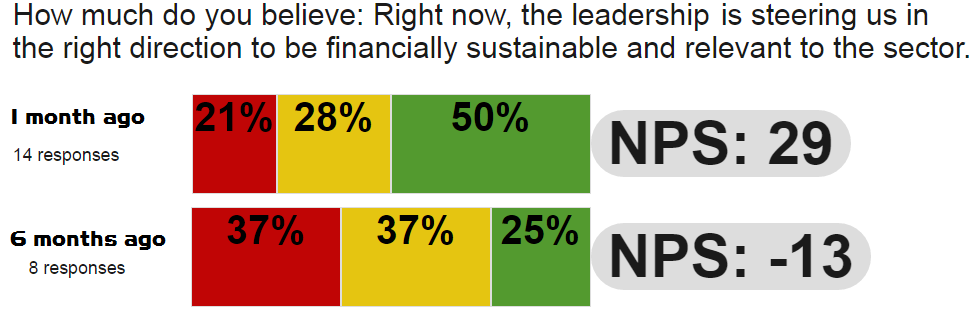 We believe that well-run organizations are also learning organizations. How do you know if you’re a learning organization? Take a diagnostic test. Answer some questions about the way your team works, and it will tell you what features your team shares with learning organizations, and what you need to work on. Here is one from the Harvard Business Review to get you started.
We believe that well-run organizations are also learning organizations. How do you know if you’re a learning organization? Take a diagnostic test. Answer some questions about the way your team works, and it will tell you what features your team shares with learning organizations, and what you need to work on. Here is one from the Harvard Business Review to get you started.
Learning is about improving performance, not proving impact. A well-run organization thinks about “performance” rather than “impact”. Good performance is defined by what people think of you, by how your relationships are evolving, and how your staff attitudes and efforts track to your goals. For example, if you’re periodically asking staff a question like:
You’ll be able to see improvements over time. Or, backsliding. But at least you have some understanding of staff attitudes towards the organization. This takes just a few minutes every six months to gather, and can promote a healthy dialogue – which is what high performance, learning organizations do.
“Impact” – the holy grail of the non-profit world’s funders – is largely defined by external forces. It varies depending on the kind of thing that you are trying to do, and how difficult the problem is to address, and how the evaluators define success. Impact is a safe place to stockpile blame and excuses because it is not under your control.
Performance is a different animal. You define it against feasible goals, on a realistic time frame, comparing yourself with others to see whether you are accomplishing these goals at least as well as the pack. You have only yourself, your managers, and your systems to blame for low performance. Good performance is modular; it can be defined for any size organization with any size budget. Unlike impact, performance goals are supposed to be attainable.
At Keystone, we train organizations how to take control of their performance and own “great relationships” as the measure of success. This allows you to accomplish more with less, and do more sustainably by tapping local people who want to be heard, which can lead to actual impact when your aims align with the world’s needs. High performance doesn’t necessarily lead to high impact, but it does guarantee that your organization will be best suited to take advantage of situations where impact is possible.

